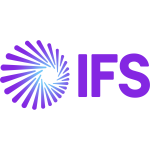What is our primary use case?
Our company implements the solution for customers in the chemical and pharmaceutical industries. We manage transformational projects that include selection, upgrade, or replacement of systems that require ERP solutions.
Our biggest implementation was for a chemical company's software hub that was custom-built on an AS/400 mainframe and they wanted to move to an ERP system. After a six-month package selection process, we chose the solution combined with extensions provided by an implementation partner that added specific functionality and narrowed down customizations.
Across all of our projects, there are 5,000 users of the solution.
What is most valuable?
The finance solution and procurement functionalities are good.
What needs improvement?
Items that impact the TCO should be improved because the solution is very complex to integrate and keep running.
Integration with a portal or front end is needed. For example, the online collaboration part of SAP with vendors lacks functionality. Integrating with sales or service processes with a CRM or cloud for customers uses three different SAP systems. Customers typically choose Salesforce instead because the SAP system is not good.
There is a very large learning curve for different domains from an end user perspective. Some things are easy to understand and other things are complex. Users receive cryptic error messages when they do things that they do not fully understand.
For how long have I used the solution?
I have been using the solution for seven years.
What do I think about the stability of the solution?
The solution is stable with no complaints from customers.
On occasion, users get cryptic error messages that they cannot resolve themselves. Someone else has to assist which results in downtime from the IT side and that has a negative impact on business performance.
How are customer service and support?
Implementation partners handle issues with support staff and response times are very high. Support staff know the product in most cases and are good.
It might take time for implementation partners to be notified of issues and then reach out to support for assistance. This support chain is expensive because the customer is invoiced based on the number of total support hours needed.
I rate technical support an eight out of ten.
How would you rate customer service and support?
How was the initial setup?
The initial setup requires advanced knowledge and can take two to three days. In some cases, setup can take several days before demo mode is available.
What about the implementation team?
Implementation partners handle setups and our company handles project management and quality assurance from the customer's perspective.
Customers do not manage the complex environment on their own but rather depend on service providers such as Deloitte or Capgemini. The price of operational support only makes sense or is efficient in instances with two or three FTEs.
What's my experience with pricing, setup cost, and licensing?
The solution often does not survive our shortlist round because it is very expensive when compared to other products. It is only appropriate or selected for very specific use cases and types of companies.
In some cases, the solution is ten to twenty-five times more expensive than competitors like Dynamics because it requires licensing, cloud environment costs, and contracts for maintenance and support.
Which other solutions did I evaluate?
Our company recommends various ERP systems depending on use case and customer environment. We have worked with Dynamics 365, NetSuite, Unit4, N4, Baan, and Vision. We work on transformation trajectories for customers who use ERP systems and want to replace, upgrade, or do a greenfield approach.
The solution is a good fit for use cases where customizations are required on top to cover sector-specific business needs, as opposed to custom greenfield implementations of Dynamics 365 with much custom development. The solution reduces the amount of customization that needs to be implemented.
Use cases for domains with no vertical solution built on top are not a good fit for the solution.
The solution is complex to learn and user acceptance of NetSuite is ten times faster.
What other advice do I have?
It is difficult to rate the solution. For some customers, it is a seven and for others it is a one out of ten. It really depends on the sector and fit gap between needs and business processes.
There are many cases or exceptions where the solution is not a good fit, so I rate it a four out of ten overall.
Which deployment model are you using for this solution?
Hybrid Cloud
If public cloud, private cloud, or hybrid cloud, which cloud provider do you use?
Other
Disclosure: My company has a business relationship with this vendor other than being a customer.















